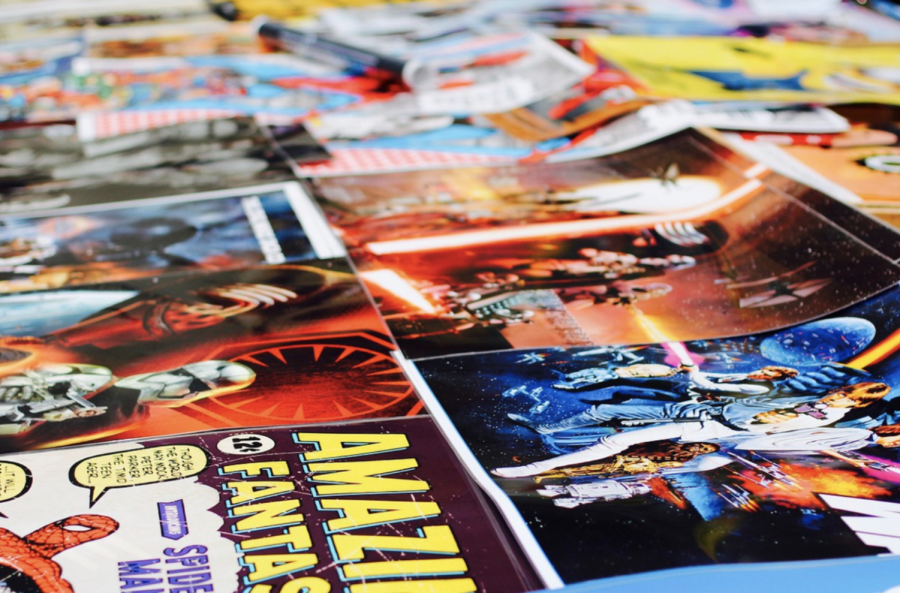Become the Next Stan Lee: Graphic Novel Course Comes to South
May 27, 2022
Comic books, graphic novels, and manga have always been popular at South—just look over anyone’s shoulder and you’ll find them reading Jujutsu Kaisen on an illicit website. Yet despite their popularity, and that of art and creative writing courses, graphic novels are rarely analyzed, taught, or even mentioned in most South High English classes. However, Ms. Karen Cuchel and Dr. Theresa Walter seek to bring graphic novels into the classroom with their newest interdisciplinary course coming to South this September—the Graphic Novel.
Discussions over adding a new class for the art department started at the beginning of the school year; in September of 2021, the art department released a survey to gauge student interest in a new course. Of the four options offered to students—Industrial Design, Graphic Novel, Fashion Illustration, and crafts—Graphic Novel ranked the highest. After the results were reviewed, the idea of partnering with the English department came naturally. “Graphic novels by nature are interdisciplinary,” said Ms. Cuchel. “It was an obvious idea. It’s wonderful that you have words and images working together.” The organization of Graphic Novel’s English and art components is contingent on student interest and scheduling. Despite not knowing exactly how each component would fit together, “[the decision to partner] came about really organically. It’s almost like it was meant to be,” said Dr. Walter.
Additionally, Graphic Novel is also open to all students, from freshmen to seniors alike. “I’m hoping we can build our own little community here,” said Dr. Walter. “A ninth grader may be mentored by a senior, and I’m hoping that we’ll be able to form some sort of relationship and build on our collective knowledge.” A sense of community will run at the core of this new class. Students will be encouraged to work together to create original graphic works, share their knowledge, and help each other throughout the process of making a graphic work, from character design, to brainstorming, to execution. “I’m hoping that it becomes a community where students can share the books they like, but I also hope to broaden [their] understanding of what graphic novels are,” said Ms. Cuchel. Future lesson plans include a lesson on character creation for the art section, and a group analysis of short graphic pieces during the English section, as well as an exploration of works not normally discussed in English classes. Students should expect to create their own graphic novel by the end of the course, either collaboratively or on their own.
A major goal of Graphic Novel is to bring together like-minded students from different fields of study—STEM kids, theater kids, humanities kids, and art kids—all united by their love of the medium. “I think [students] will be surprised by who else is interested in the stuff that they are,” said Dr. Walter.
A source of inspiration for Graphic Novel was Mr. Christopher Cioffi, a chemistry teacher, who expressed his love for comics at a Building Curriculum Group meeting where the course was proposed. “Frankly,” said Dr. Walter, “I would never have expected a science teacher to be so passionate about this genre.” Interest in graphic novels seems to span across academic interests.
Even if you don’t consider yourself artistically inclined, Graphic Novel is still a course worth taking. “Students should not worry if they don’t feel comfortable drawing. They should just love the medium, and want to learn more about it,” said Ms. Cuchel.
Whether you’ve been reading comics in class since the sixth grade, or picked up your first manga yesterday, Graphic Novel is a class designed for fans of graphic stories, be they superhero comics, manga, or contemporary graphic novels.. It is not just a lecture based class, but rather one that encourages student creativity and collaboration. It is also a class for all sorts of students, and a place to find others with similar interests. Above all, don’t be worried about artistic skill or familiarity with the medium—the most important attribute is a desire to learn. “[Students] shouldn’t be intimidated if they don’t have a massive knowledge [on graphic novels] yet,” said Dr. Walter, “There’s a space for all types of experiences in the class.”







